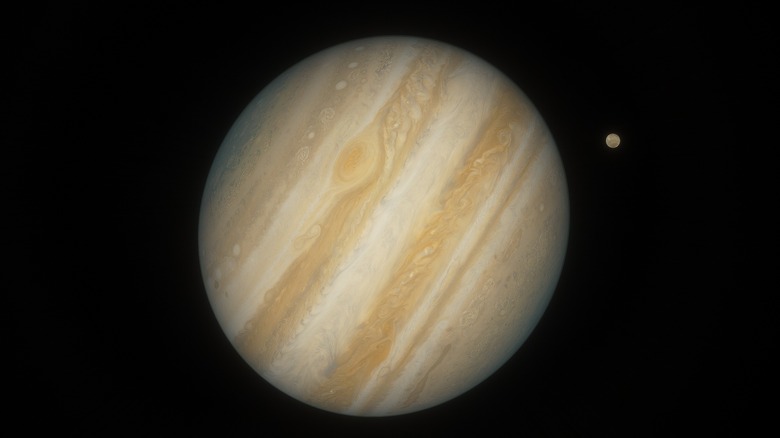Jupiter Became Enormous By Swallowing Smaller Planets, Researchers Suggest
People sometimes say that nature can be horrifying, and apparently that can also be applied to celestial bodies too. According to researchers, evidence compiled from data collected from the Juno probe — along with measurements previously observed by Galileo — suggests that Jupiter may have attained its enormous size through unexpected means: eating smaller planets.
You see, Jupiter is a gas giant, but it's not entirely made up of gasses. It does has some planetary mass hiding behind the intense atmosphere the 10,000 mile-wide storm system that has been raging for centuries. Researchers theorize that while Jupter was still growing, it absorbed other planetary materials around it, which allowed it to keep growing in size until it became the largest in the entire solar system.
In short, it's possible that Jupiter is so big because it "ate" smaller planets (referred to as "planetesimals") while its atmospheric envelope was still developing. Sounds a bit like something out of a Junji Ito story.
No, Jupiter isn't a real-world Unicron or Galactus
Don't expect Jupiter to start devouring the rest of the floating masses in its vicinity any time soon, though. According to NASA the planet settled down roughly four billion years ago, where it's been sticking to its orbit ever since.
Jupiter is also over 390 million miles away from Earth, so even if it did start pulling more material into itself (which it won't) we're a pretty safe distance away. If any body had something to worry about, it would be the 53 confirmed, or plus 26 provisional, moons currently orbiting the massive gas ball (via NASA).
Really though, what this has lead reserchers to believe is that we need to pay more attention to how we estimate and measure the interior giant planets like Jupiter. Also bear in mind that this explanation for Jupiter's growth is still currently a theory, and as such it could be further bolstered or disproven as additional research is performed and more data is collected.

